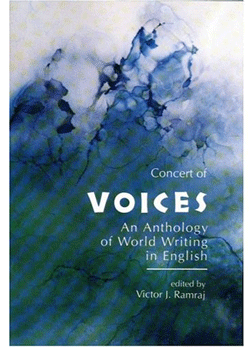WITH Emancipation celebrations still in full flow (throughout the month of August ), it would be a useful act to revisit the book, ‘Kofi Baadu: Out of Africa’, mainly because this book gives a background to our sojourn from slavery to emancipation.
 There many other reasons for revisiting this book as we would see later. In looking at this book, we would see how a brilliant historian was able to harness and package his research/knowledge in such a way as to be understood by young readers.
There many other reasons for revisiting this book as we would see later. In looking at this book, we would see how a brilliant historian was able to harness and package his research/knowledge in such a way as to be understood by young readers.
To young readers, this book on enslaved Africans brings elucidation coloured with the adventure and copious illustrations/photographs gluing them to the story. The connectivity factors here are adventure and pictures.
It is paramount when writing for children that we make that connection early to whet the appetite and maintain the interest of children. Rodney did this with the ease of a griot.
Rodney knew the importance and value of history. Further, Rodney knew the importance and value of writing our own history against the distortions peddled by our colonial masters who reported a history in a conqueror/vanquish relationship.
And Rodney knew the importance of reading; he discovered the importance of reading at a young age. While he was at secondary school (Queen’s College), he made the National Library his second home, from where he started a tentative dialogue with local, regional and international thinkers. This reading eventually led to his writing, expanding the dialogue for present and future generations as he matured from scholarship to scholarship.
And when the time was ripe, he sought to include children in the process of ‘probing the text’; in an extraordinary and rare move by any academic anywhere, Rodney distilled his thoughts in such children books like ‘Kofi Baadu: Out of Africa’ and ‘Lakshmi: Out of India’.
‘Kofi Baadu: Out of Africa’, ‘Lakshmi: Out of India’ and related works (‘Fung-A-Fat: Out of China’, ‘Adriaan Hendricks: Out of Holland’, and ‘Joao Gomes: Out of Madeira’) were birthed “so that the children, at least, might better understand themselves and each other.” How very perceptive of the man! Understanding among babes, and making changes, starting at a young age.
In this booklet, ‘Kofi Baadu: Out of Africa’, Rodney recreated the story of “a single involuntary migrant” from Africa to Guyana. Although it is a fictionalised account of someone named Kofi Baadu, “it is located within a context of names, dates, episodes and other references which are authentic. The social settings are accurate, and the circumstances which explained Kofi Baadu’s departure from his homeland were typical for enslaved Africans.”
The book illustrated “some aspects of the history and culture of West Africa, and more particularly, of the area now called Ghana.” Ghana is most important to the story and the history of subjugated and enslaved Africa, as revealed nearing the end of the book on Page 31.
Ghana “was in the vanguard of liberation struggle in Africa. Its independence …in 1958 marked the beginning of the end of colonial rule throughout the African continent.”
The book opens with the following heading: ‘Kofi Baadu born 1652, arrived Guyana 1698’. It is divided into ten subheadings, namely ‘In captivity’; ‘The extended African family’; ‘Trading in West African’; ‘Ashante – the political kingdom’; ‘Justice and the people’; ‘The Ashante Priesthood’; ‘Death and burial’; ‘Slavery and African politics’; and ‘Postscript’.
Those ten subheadings gave an elaborate background (taking up 30-odd pages) of Kofi Baadu before he was shipped out of Africa, but devoted less than thirty words to his impending arrival in Guyana.
There are numerous suggestions to act on, and lessons to be drawn from each page. For instance, on Page 5, we learn of the African’s respect for knowledge… ‘(i)gnorance is weakness’, and on the same subject, on Page 13, ‘(n)ot to know is bad, but not to wish to know is worse’. On another subject, on Page 7, we find how useful it is to show respect for ancestors and elders. Later, on Page 11, we learn how the Ashante “weavers unravelled silk thread to produce the marvellous Kente cloths.”
‘Myths’, on Page 16, “are sometimes essential in the lives of a people.” Two pages later, we learn about the importance of symbols, and about ‘Kwaku Ananse, the legendary spider’, “[who] could outwit any animal of superior strength – including giants like the lion and the elephant.”
And on the subject of governance, on Page 19, there is “an old Ashante saying that governing people was like holding an egg. In other words, it was a most delicate matter; and without care, the whole thing would fall and smash to pieces.”
The book holds other meanings for us as children and adults, like “(E)verything made by the Akan had a surface appeal, and a deeper meaning (Page 20).”
This quick glance at ‘Kofi Baadu’ is mainly about the surface appeal. For the deeper meaning, you will have to study the book. (‘Kofi Baadu: Out of Africa’ by Walter Rodney, first published in 1980, reprinted by the Guyana Book Foundation 2004.)




.png)









